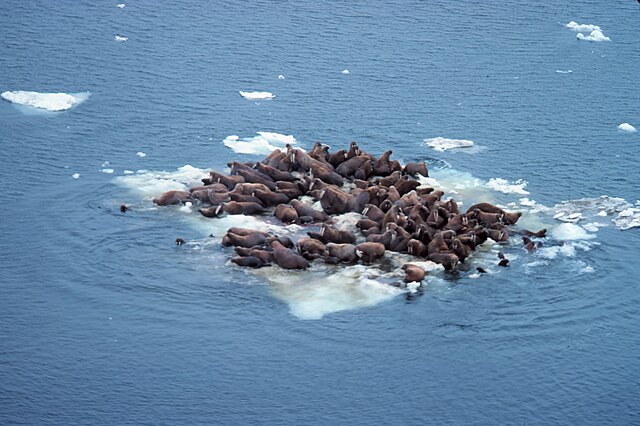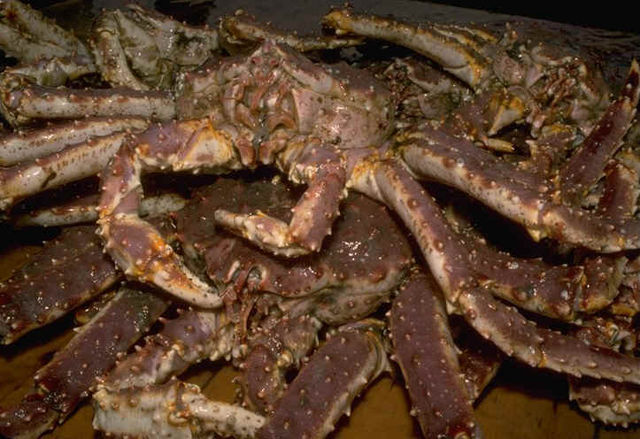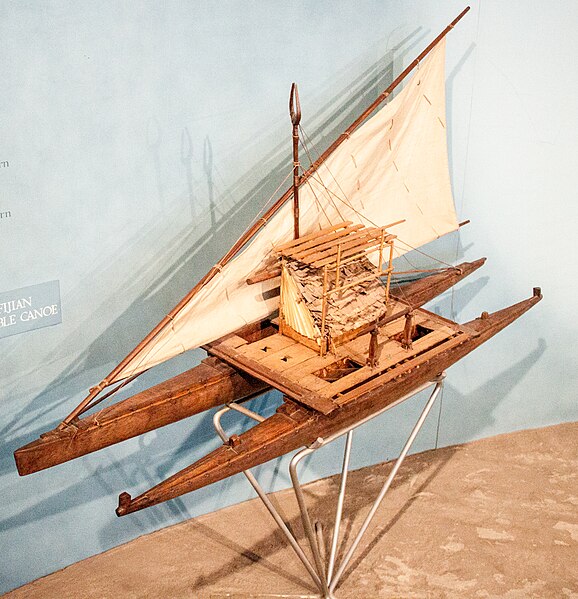The Bering Sea is a marginal sea of the Northern Pacific Ocean. It forms, along with the Bering Strait, the divide between the two largest landmasses on Earth: Eurasia and the Americas. It comprises a deep water basin, which then rises through a narrow slope into the shallower water above the continental shelves. The Bering Sea is named after Vitus Bering, a Danish navigator in Russian service, who, in 1728, was the first European to systematically explore it, sailing from the Pacific Ocean northward to the Arctic Ocean.
The Russian "Rurik" sets anchor near Saint Paul Island in the Bering Sea in order to load food and equipment for the expedition to the Chukchi sea in the north. Drawing by Louis Choris in 1817.
Walrus (Odobenus rosmarus divergens), hauled out on Bering Sea ice, Alaska, June 1978. (Source: NOAA)
Snailfish, a non-commercial fish, caught in the eastern Bering Sea
Red king crab
The Pacific Ocean is the largest and deepest of Earth's five oceanic divisions. It extends from the Arctic Ocean in the north to the Southern Ocean in the south, and is bounded by the continents of Asia and Australia in the west and the Americas in the east.
The Pacific Ocean, photograph taken from space by the GOES-18 spacecraft in September 2023
Model of a Fijian drua, an example of an Austronesian vessel with a double-canoe (catamaran) hull and a crab claw sail
The bathyscaphe Trieste before her record dive to the bottom of the Mariana Trench, 23 January 1960
Abel Aubert du Petit-Thouars taking over Tahiti on 9 September 1842








